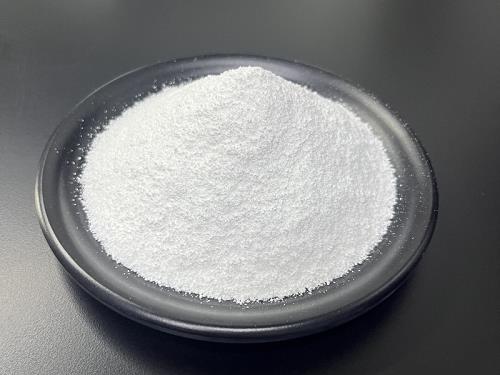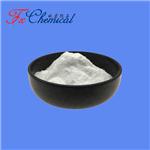Escin: Pharmacological Properties & Molecular Mechanisms
Nov 28,2025
Escin is the active component of Aesculus hippocastanum, the horse chestnut, which was itself used as a traditional medicine for centuries, and is still used to treat certain conditions, including hemorrhoids, varicose veins, hematoma, and venous congestion. Escin was first isolated in 1953, and has demonstrated anti-edematous, anti-inflammatory, and venotonic properties in various preparations. It has also shown effectiveness as an adjunct or alternative to compression therapy, and is known to act directly on endothelial hypoxia. In the 1960s, Lorenz et al found that horse chestnut seeds contain a fraction consisting of a mixture of the triterpenic sapogenins, which could be chemically isolated without denaturation. These pentacyclic triterpenic sapogenins were identified as protoescigenin and barringtogenol, and the fraction was named escin.

The Effect of Escin on the Plasma Membrane of Human Red Blood Cells
Escin is a saponin, a biologically active component of horse chestnut seeds (Aesculus hippocastanum). Horse chestnut saponins have a similar structure, consisting of a triterpene or steroid hydrophobic backbone and containing varying numbers of sugar residues. Saponins consist of an aglycone (the hydrophobic part of the molecule), to which oligosaccharides are attached. Horse chestnut extract contains approximately 30 different molecules, of which β-escin constitutes approximately 60%. Saponins found in many plants have interesting pharmacological properties, which is why they have been used since ancient times to treat various diseases. Escin has anti-inflammatory, anti-edematous, and venotonic properties. It is also active against various types of cancer, such as lung adenocarcinoma, hepatocellular carcinoma, ovarian cancer cells, and leukemia cell models. Plant extracts, frequently used in herbal medicine, demonstrate stronger activity than isolated biologically active substances. The explanation lies in the synergistic effects of various combinations of active compounds. It is known that lipophilic monoterpenes or saponins are characterized by a targeted effect on cell membranes. For example, the combination of escin with thymol demonstrated approximately 100 times more potent hemolytic activity than alone.[1]
Escin from the horse chestnut tree is a natural surfactant that is widely used in pharmacology. In our study, we examined the effects of this compound on the properties of red blood cell membranes when exposed to it. Isolated RBCs were exposed to it at three selected concentrations (0.15, 0.30, and 0.60 µg/mL) for 24 h. Studies have shown that this compound causes a significant increase in the osmotic fragility of RBCs in a solution of 155 mM NaCl. In our work, we investigated red blood cell damage caused by escin. The concentrations of which used led to damage to the plasma membrane, resulting in RBC hemolysis and increased fluidity of membrane lipids. Membrane disintegration exposed amino groups in membrane proteins but did not disrupt the membrane cytoskeleton or the structure of surface proteins. Likely, higher escin concentrations could also induce changes in the structure of membrane proteins, but this disrupted the membrane structure to a much greater extent, making measurement of its fluidity impossible. Furthermore, our studies indicate that in the treatment of chronic venous insufficiency, varicose veins, and lower limb ulcers, the maximum doses of escin should not be exceeded, as this could lead to intravascular hemolysis and oxidative stress initiated by released hemoglobin.
Molecular Mechanism of Escin against Neuropathic Pain
The International Association for the Study of Pain defines neuropathic pain (NP) as pain caused by a lesion or disease of the somatosensory nervous system. Prevalence rates of NP vary between 11% and 40% in the USA. Escin, the main active component of Aesculus hippocastanum seed, has attracted attention owing to its anti-inflammatory effects. Escin also possesses the capacities of antioedematous, anticancer, antioxidant effects, etc. This study reported that escin significantly decreased the NF-kappa B expression of lipopolysaccharide mice for its anti-inflammatory effect. Moreover, Cheng et al. found that it reduced the concentration of the proinflammatory cytokines TNF-α, IL-1β, and IL-6 in endotoxemia mice and LPS-induced macrophages. Numerous studies have shown that inhibiting the proinflammatory cytokines and chemokines in the dorsal root ganglia, spinal cord, and brain would relieve NP. Therefore, we speculated that escin with the anti-NP character would alleviate NP by relieving the neuroinflammation in the peripheral nervous system and central nervous system.[2]
In this article, combining network pharmacology and molecular docking with molecular dynamics simulation, we investigated the potential targets and signaling pathways of escin in treating NP. In total, 94 escin targets were predicted by network pharmacology. Among them, SRC, MMP9, PTGS2, and MAPK1 were the core candidate targets. Subsequently, the analysis of GO and KEGG enrichment revealed that escin affected NP by regulating protein kinase C, MAP kinase, TRP channels, the T-cell receptors signaling pathway, and the TNF signaling pathway. The results of molecular docking and molecular dynamics simulation confirmed that escin not only had a strong binding activity with the four core target proteins but also stably combined in 50 ns.
References
[1]Gwozdzinski L, Pieniazek A, Gwozdzinski K. The Effect of Escin on the Plasma Membrane of Human Red Blood Cells. Int J Mol Sci. 2025 Sep 13;26(18):8923. doi: 10.3390/ijms26188923. PMID: 41009489; PMCID: PMC12469791.
[2]Li X, Wu Y, Wang H, Li Z, Ding X, Dou C, Hu L, Du G, Wei G. Deciphering the Molecular Mechanism of Escin against Neuropathic Pain: A Network Pharmacology Study. Evid Based Complement Alternat Med. 2023 Oct 16;2023:3734861. doi: 10.1155/2023/3734861. PMID: 37876856; PMCID: PMC10593550.
- Related articles
- Related Qustion
Synephrine hydrochloride exerts thermogenic effects, aids weight management, and suppresses esophageal cancer growth with low cardiovascular impact.....
Nov 28,2025API2-((3aR,4S,6R,6aS)-6-Amino-2,2-dimethyltetrahydro-3aH-cyclopenta[d][1,3]dioxol-4-yloxy)ethanol L-tartrate enables ticagrelor synthesis for antiplatelet therapy.....
Nov 28,2025API








